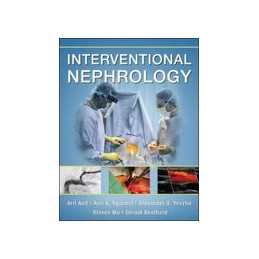- Reduced price

Order to parcel locker

easy pay


 Delivery policy
Delivery policy
Choose Paczkomat Inpost, Orlen Paczka, DHL, DPD or Poczta Polska. Click for more details
 Security policy
Security policy
Pay with a quick bank transfer, payment card or cash on delivery. Click for more details
 Return policy
Return policy
If you are a consumer, you can return the goods within 14 days. Click for more details
Publishers Note:: Products purchased from Third Party sellers are not guaranteed by the publisher for quality, authenticity, or access to any online entitlements included with the product.
A complete guide to every aspect of interventional nephrology—an essential text for students, residents, fellows, and clinicians
A Doodys Core Title for 2017!
This timely resource examines all relevant aspects of interventional nephrology, from the history of nephrology to the principles governing the latest vascular access techniques. Heavily illustrated with full-color procedural drawings and featuring an easy-to-follow design, the book includes contributions from many leading authorities in the field whose insights combine to form an unprecedented, clinically rigorous survey of interventional nephrology.
Interventional Nephrology opens with an instructive look at the origins of hemodialysis access; an overview of the history of interventional nephrology in the U.S. and abroad; and clinically relevant coverage of vascular access outcomes. The high-yield coverage continues with a probing assessment of ethics, public policy, and practice guidelines, illuminating such pivotal topics as industry partnerships and conflicts of interest. The principles that support interventional nephrology techniques are also extensively reviewed, encompassing everything from vascular mapping to peritoneal dialysis catheter removal, while the following section delves into the key surgical aspects of vascular access. Finally, the book provides useful perspectives on how political and policy affairs impact current practice.
FEATURES
Data sheet
Reference: 94092
Author: Neil Tanna
